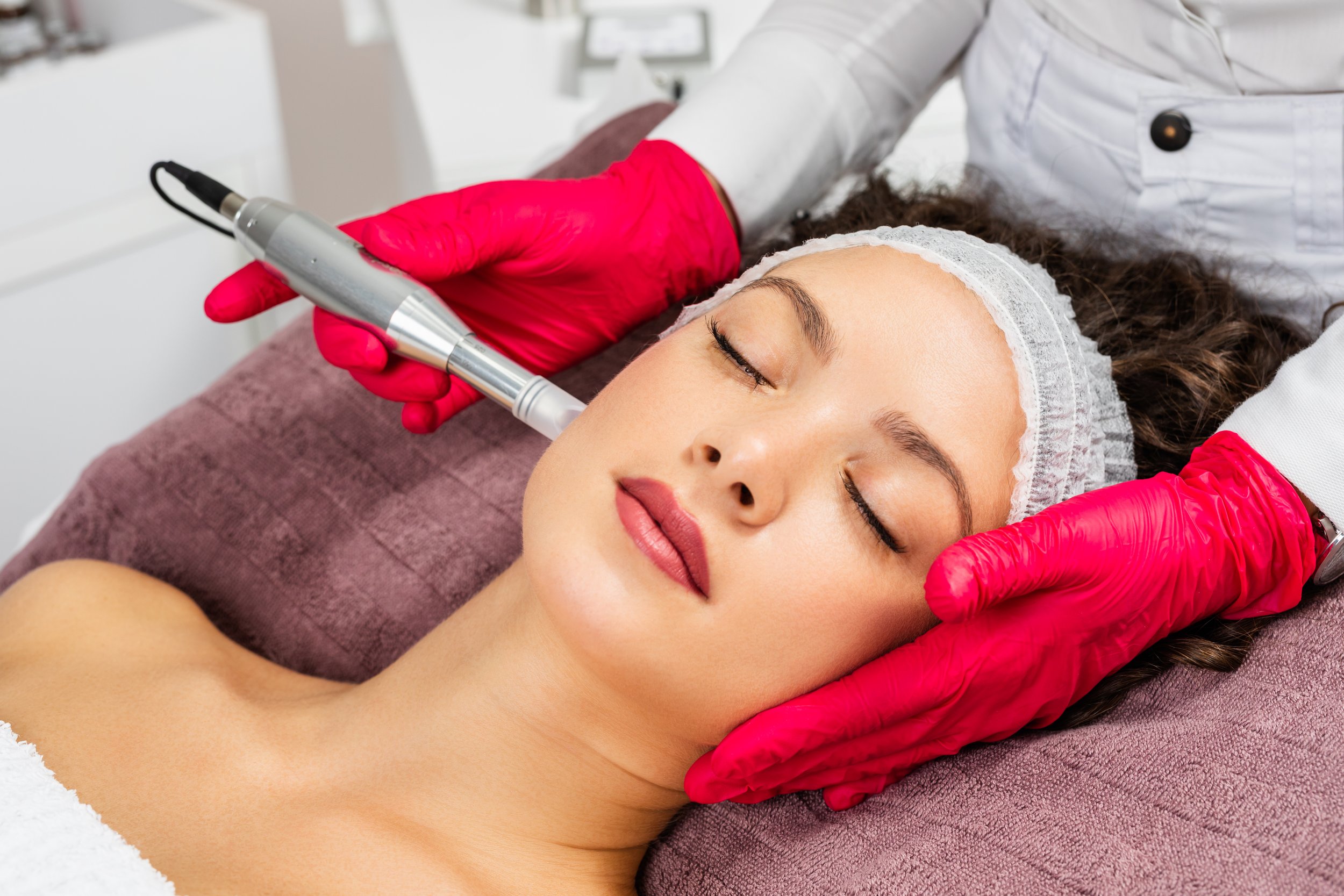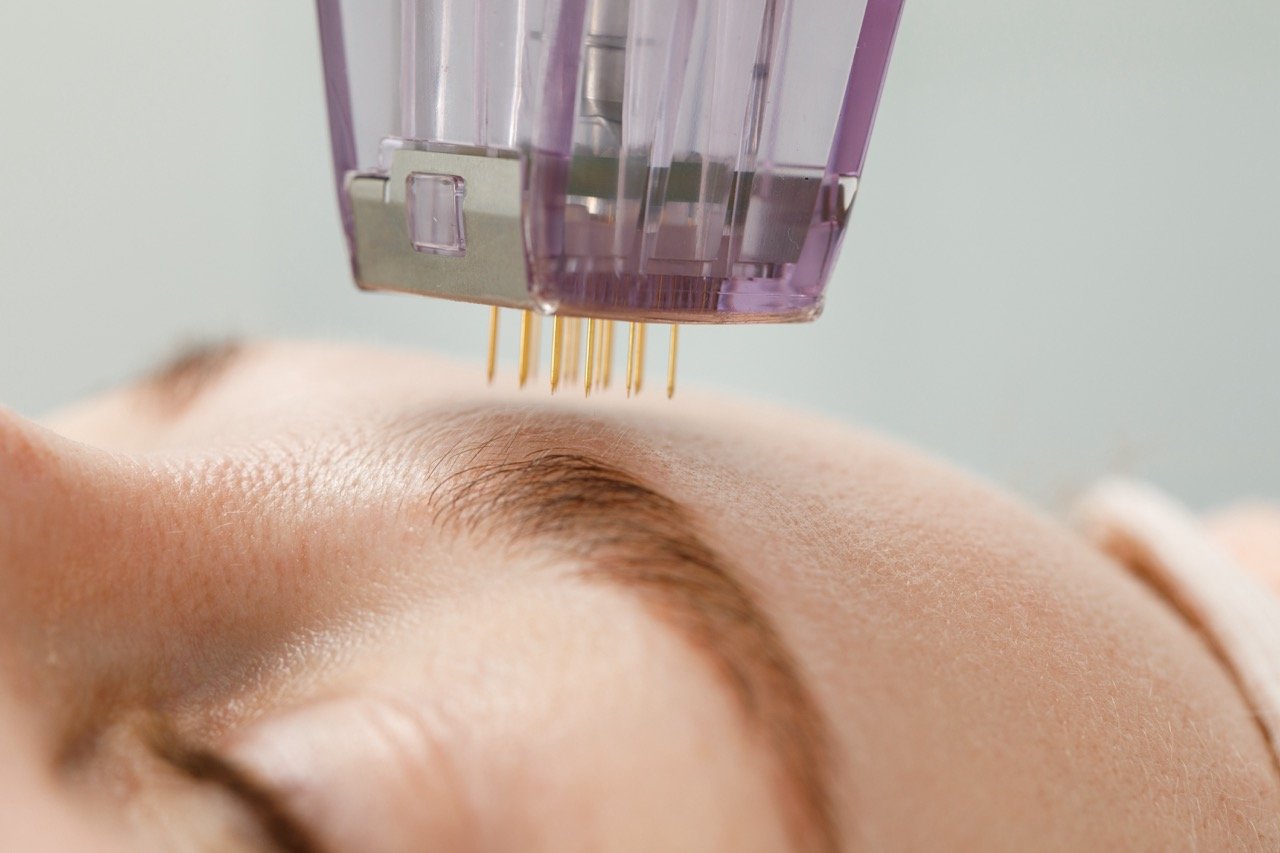
Microneedling

What does microneedling do?
This minimally invasive treatment generates new collagen and skin tissue. This rejuvenation effect can lead to improved skin texture and firmness, as well as a reduction in scars, large pore size, and stretch marks. It doesn’t carry the risk of skin discoloration, unlike some facial rejuvenation procedures that use heat, light or lasers. This makes microneedling ideal for people with darker skin tones.
What is microneedling?
Microneedling, also known as 'percutaneous collagen induction therapy', is a cosmetic procedure that involves pricking the skin with tiny needles. It's best suited for individuals who are concerned about enlarged pores, fine lines, wrinkles (including facial wrinkles), and anyone looking to enhance their skin's texture and elasticity.
Microneedling for skin conditions
Microneedling for enlarged pores
This new collagen growth can reduce the appearance of large pores by making the skin firmer and more elastic. Additionally, microneedling allows for better penetration of topical treatments that can further improve skin texture and reduce pore size.
Microneedling for Wrinkles and Aging skin
This innovative procedure has gained acclaim for its ability to significantly boost skin elasticity, smooth out fine lines, and restore a youthful appearance to tired, aging skin. By encouraging the production of collagen and elastin, microneedling doesn't just offer a temporary fix but contributes to a long-lasting transformation, leaving individuals with skin that's not only visually younger but also healthier and more resilient from within.
Microneedling for Acne Scars
Acne scarring can be a persistent reminder of past skin issues, which can overwhelm your confidence. Microneedling, however, can help treat acne scars and restore that confidence. It triggers the body's natural healing process and increases the production of collagen and elastin, helping to fill in and smooth out the texture of acne scars, making them less noticeable. procedures.
Microneedling for Treating Stretch Marks
Stretch marks, those visible lines on the surface of the skin, often result from rapid stretching of the skin due to growth spurts, weight changes, or pregnancy. While they are a common and completely natural occurrence, many look for ways to minimize their appearance. Microneedling stimulates the production of collagen and elastin—two key proteins responsible for the skin's elasticity and firmness. Over time, this can lead to a reduction in the visibility of stretch marks, blending them more seamlessly with the surrounding skin tissue.
Benefits of microneedling
It's a short procedure.
The procedure itself takes between 10-20 minutes, but with adding the topical anesthesia, the total time is around 60 minutes.
There's very low risk for side effects.
Unlike certain facial rejuvenation methods that employ heat, light, or lasers, microneedling does not pose a risk of skin discoloration.
It's done in-office.
No need to visit a hospital to get this done. At MIMIT Health, we offer it in-office.
There's minimal downtime after the procedure.
Downtime is minimal or not needed at all.
Patients can resume normal activities within a day, though the treated area may appear red and feel sensitive briefly.
How does microneedling work?
The process works by causing slight injury to the skin, which in turn prompts the skin to heal itself by producing more collagen and elastin. Due to its ability to regenerate skin cells, microneedling has gained popularity as an effective treatment for various skin concerns.
Cleansing and Applying the Numbing Cream:
About an hour before the procedure, the skin is first cleansed to prevent infection. Then, a numbing cream is applied for comfort during the procedure.
Using the Microneedling Device:
A professional uses a microneedling device, which is a pen-like tool with fine needles, to create tiny punctures in the skin, ensuring even coverage. Not to worry, however. You won't notice the punctures after the procedure. These needles penetrate at a specific depth to stimulate the body’s healing process, boosting collagen and elastin production.
Applying of Serums:
After microneedling, a serum or calming treatment may be used to enhance healing, providing benefits like hydration and anti-inflammatory effects.
Microneedling post care
Use sunscreen
Post-treatment, your skin becomes more susceptible to sun damage, necessitating the use of sunscreen. Dermatologists often suggest waiting a week before exposing treated skin to sunlight or harsh chemicals. Keep your skin out of the sun for at least 14 days.
Avoid sweating
Because your skin might be irritated after the procedure, it's important to avoid further irritation.
Avoid wearing makeup for a bit
It's advisable to wait until your skin has healed before applying makeup.
Microneedling with PRP
Microneedling with platelet-rich plasma (PRP) provides improvements in acne scarring, higher patient satisfaction, and decreased post-procedure downtime, according to research on the topic.
The microneedling process allows for better absorption and penetration of the PRP, enhancing its effectiveness in promoting skin healing and regeneration. Many individuals seek microneedling with PRP to address concerns such as fine lines, wrinkles, acne scars, and uneven skin tone, with minimal downtime and natural-looking results.
FAQs
-
While pain tolerance varies from person to person, many individuals describe the sensation during microneedling as minor discomfort rather than painful. It's generally well tolerated by our patients.
-
Microneedling is typically paid for out-out-pocket.
Per treatment, it's between $200-700. Therefore, total costs are $600-$4,200.
-
The FDA has approved microneedling devices for treatment of facial acne scars, facial wrinkles, and abdominal scars. It's important to note that the FDA has not authorized microneedling devices for over the counter sales. Therefore, it's important to see a healthcare professional if you're wanting this treatment.
-
Talk to your healthcare provider if you have:
A blood disorder or are on anticoagulants
Cancer or are receiving chemo or radiation
A skin disease
Recently undergone radiation therapy.
-
Microneedling is a safe procedure. However, there can be some side effects:
Bruising
Scarring
Irritation/Redness
Itching
Infection (less common)
-
While the procedure itself lasts about 10-20 minutes, most people need 3-6 treatments to see a moderate difference. The process of skin rejuvenation begins swiftly after microneedling, however, with some seeing mild improvement after a couple treatments.
Microneedling treatments should be done 3-6 weeks apart.


